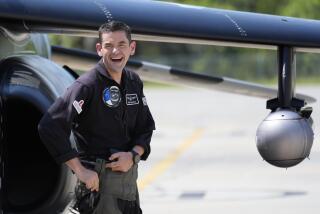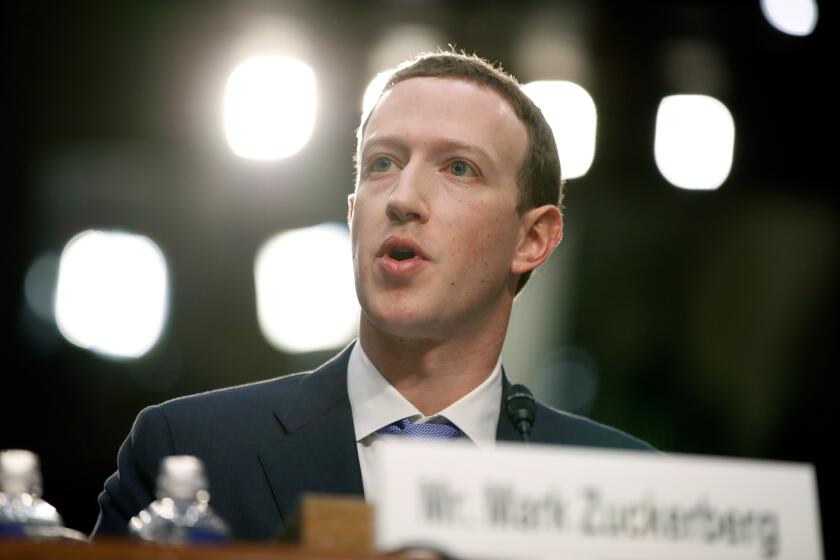SpaceX’s new space tourism offer: 5-day flight in Crew Dragon capsule
- Share via
Wealthy tourists have flown to the International Space Station and marveled at the curvature of the Earth from 250 miles above the planet’s surface.
Soon, well-off individuals could get an even better view of the planet. A space tourism company is partnering with SpaceX to offer a mission lasting up to five days aboard a SpaceX Crew Dragon capsule that could take tourists higher into space than private citizens have ever gone before.
The mission could put tourists into orbit about 850 miles above the surface of the Earth — the same height reached by the crew of NASA’s Gemini XI capsule in 1966. The farther a spacecraft gets from the Earth, the wider the view of the planet below, noted Tom Shelley, the president of Space Adventures.
Space Adventures said Tuesday that the mission, which could fly as many as four people, would enable tourists to “see planet Earth the way no one has since the Gemini program.” NASA’s Gemini program was a precursor to the Apollo moon program and helped the agency learn about the effects of extended spaceflight on humans.
The Crew Dragon capsule is outfitted with three windows and snugly fits four seats. Riders would need to undergo astronaut training before their trip.
There’s still a lot to be determined about a tourist flight aboard the Crew Dragon. The mission could launch as early as next year, though 2022 is more likely, Shelley said. And the company is still gauging interest in such a mission.
“We’ll see if we’re able to identify enough clients who are prepared to commit,” Shelley said. “This is a first foray into the market. ... Our hope is that flights like this become a regular occurrence in the future.”
The Vienna, Va., company is not disclosing the exact price per tourist because it depends on a variety of factors, including how many people decide to sign up.
Shelley said that tourists would pay tens of millions of dollars and that the price was in the same range as other orbital space tourism missions. (Last year, NASA estimated a tourist flight to the space station would cost $58 million per person.)
The price is likely to limit the number of interested customers. Because of that, SpaceX probably won’t count on this as a major revenue stream, said Janice Starzyk, vice president of commercial space at analytics and engineering firm Bryce Space and Technology.
“I don’t think that the market here is big enough to really make a big dent in their operations, considering what else they’re working on,” she said of SpaceX. “It’s a nice service to offer, but I don’t think it’s a core part of their business.”
Other space tourism firms have reached a broader base of potential customers by offering shorter, less expensive trips that aim for a lower altitude: suborbital space.
Virgin Galactic, owned by British billionaire Richard Branson, has taken deposits of up to $250,000 from hundreds of people who are interested in riding the company’s space plane to 50 miles above the Earth, where they can experience a few minutes of weightlessness.
Blue Origin, founded by Amazon.com Inc. Chief Executive Jeff Bezos, plans to ferry tourists to suborbital space in its New Shepard capsule and rocket system, though the company has not yet released pricing.
With the suborbital market, “you’re talking about a much smaller time commitment, a much lower cost,” Starzyk said. “It’s a whole different game.”
Space Adventures would lead bookings and help customers figure out mission details. Hawthorne-based SpaceX would be in charge of astronaut training, as well as launching and landing the capsule and monitoring it during the mission.
SpaceX is already doing training sessions for NASA astronauts as the company prepares to use its Crew Dragon capsule to transport them to the International Space Station. Its first such mission is planned for this year.
The company developed the capsule under a NASA contract worth up to $2.6 billion and recently reached its last major milestone — a test of the spacecraft’s emergency escape system — before its first crewed flight.
“A lot of people have been waiting for the day that private citizens can fly on a SpaceX Dragon,” Shelley said. “They’ve been watching over the last decade as SpaceX has built up their flight heritage.”
SpaceX President Gwynne Shotwell said in a statement that the mission would “forge a path to making spaceflight possible for all people who dream of it.”
SpaceX has previously indicated interest in space tourism. In 2018, it announced that Japanese billionaire Yusaku Maezawa would be the first paying customer to travel around the moon in SpaceX’s Starship spacecraft, which is still under development.
Space Adventures, founded in 1998, has previously booked a handful of private astronauts on trips to the space station via Russia’s Soyuz spacecraft.
The company has not yet determined how long astronauts would need to train for the Crew Dragon mission, but it would be less than the five-month duration needed for the company’s tourist trips to the space station because the Soyuz capsule and the space station are both more complicated to operate than the Crew Dragon capsule, Shelley said.
The Crew Dragon has touchscreens and is much more automated than NASA’s space shuttle, which had 2,000 switches and circuit breakers.
More to Read
Inside the business of entertainment
The Wide Shot brings you news, analysis and insights on everything from streaming wars to production — and what it all means for the future.
You may occasionally receive promotional content from the Los Angeles Times.











